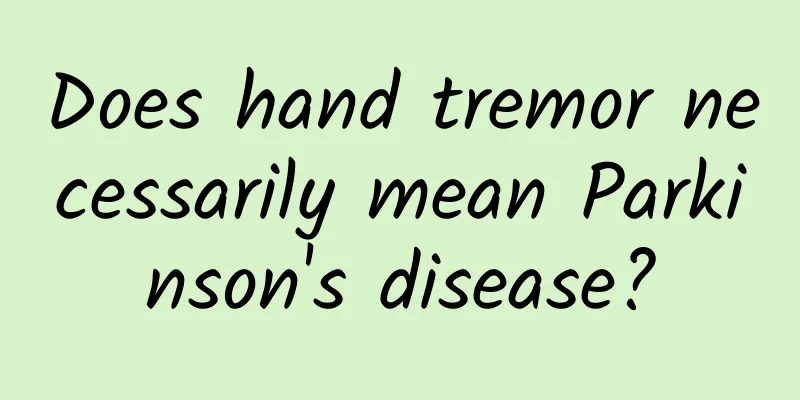A couple was diagnosed with esophageal cancer just because of a habit, and there is a fatal crisis behind it

|
Recently, 70-year-old Grandma Lin and 72-year-old Grandpa Luo went to the hospital for similar symptoms, and were eventually diagnosed with esophageal cancer. When Grandma Lin went to the hospital for hoarseness, it was found that the tumor had progressed to the late stage; and Grandpa Luo, who accompanied her to the hospital, casually mentioned that he "choked when eating", which turned out to be esophageal cancer after examination. When the doctor asked about the medical history, he found that the couple, who had been together for half their lives, had an amazing common habit: eating hot food every day for decades. Grandma Lin must drink freshly boiled tea every day, and Grandpa Luo likes to use white wine with hot meals. In their eyes, the "health magic weapon" that dispels dampness and cold is actually a "chronic poison" that destroys the esophagus. This case reveals a neglected health truth. As early as 2016, the World Health Organization classified hot drinks above 65°C as Class 2A carcinogens, the same level as high-temperature fried foods. China is the country with the highest incidence of esophageal cancer in the world, with more than half of the new cases worldwide each year. Regions that prefer hot food, such as North China and Chaoshan, are the hardest hit. The esophageal mucosa can only tolerate temperatures between 40 and 60°C. When 90°C hot tea or 80°C porridge slides through the esophagus, the seemingly "painful" swallowing action actually leaves burn marks on the mucosa that are invisible to the naked eye. This repeated burn and repair process is like playing a dangerous game of Russian roulette at the genetic level. Every time a cell regenerates, DNA replication errors may occur, eventually leading to cancer. The dangers of esophageal burns The esophagus is a muscular tube about 25 cm long, and its inner wall is only covered with a mucosa about 0.5 mm thick. When food above 60°C enters, the surface cells of the mucosa will undergo protein denaturation within 0.1 s, and the esophagus will be burned. This microscopic burn will not sting like a skin burn (because the esophageal pain nerves are sparse), but it will trigger an emergency cell repair program. The stem cells in the basal layer are forced to divide faster and replace necrotic tissue with new cells. If this damage is repeated several times a week for decades, the probability of gene mutation will increase exponentially. What's more dangerous is that high temperature can destroy the integrity of the mucosal barrier. Take Mr. Luo as an example. The damage to the mucosa caused by the liquor (ethanol) he drinks every day is controllable at room temperature, but on the micro-injuries caused by hot food, alcohol is like a corrosive agent that penetrates into the wound. At this time, if carcinogens such as nitrites in salted fish and benzopyrene in barbecue are ingested, their destructive power will be multiplied. Epidemiological data show that people who have the habit of eating hot food, drinking, and smoking at the same time have an esophageal cancer risk 8 to 10 times higher than ordinary people. This combination of "high temperature + irritants" is quietly creating a health crisis on the dining tables of countless families. The influence of traditional culture "Eat food while it's hot, and drink tea until your mouth is hot" - this dietary admonition that is deeply rooted in the Chinese people's bones actually hides murderous intentions. From the temperature standard of "hanging beads on the edge of the cup" for Chaoshan Kung Fu tea to the boiling hot way of "scalding the tripe up and down" for Chongqing hot pot, the admiration for high-temperature food has long surpassed the enjoyment of taste and evolved into a cultural symbol of emotional connection. The formation of this temperature worship is not only the remnant of survival wisdom in cold climates, but also implies the psychological dependence brought about by sensory stimulation: the slight burning pain caused by high temperature will stimulate the secretion of endorphins, producing an addictive pleasure similar to "pain and pleasure". Breaking this collective unconsciousness requires cognitive reconstruction. Pour freshly boiled tea into an open cup and let it stand for 5 minutes to drop from 90°C to 65°C; stir it continuously with a spoon for 2 minutes, and the temperature can be further reduced to 55°C - this is the safety threshold of the mucosa. For people who find it difficult to give up the aroma of hot drinks, use double-layer glass cups or stoneware cups instead, which can not only slow down the cooling rate, but also avoid the risk of burns. At the family dinner table, changing the urging of "eat while it's hot" to the reminder of "let it cool before eating" can reduce the risk of esophageal cancer by 50%. Although these subtle changes seem simple, they can effectively reduce the risk of esophageal cancer in daily life. Prevention measures for esophageal cancer A three-level defense system is needed to fight esophageal cancer. The first-level prevention focuses on habit reshaping: in addition to controlling the temperature of food, it is also necessary to limit alcohol (male daily ethanol intake ≤25 g), reduce the intake of pickled foods, and increase dark green vegetables (rich in folic acid that repairs mucosa). The core of secondary prevention is early screening. For example, the esophageal iodine staining endoscopic examination technology promoted by Japan can detect millimeter-level mucosal lesions, making the cure rate of early cancer reach more than 95%. For those over 40 years old, with a family history or long-term smoking and drinking habits, it is recommended to undergo a gastroscopy every 2 to 3 years. The third-level prevention focuses on standardized treatment. The current 5-year survival rate of endoscopic mucosal resection for early cancer exceeds 90%, while this value is less than 20% for advanced patients. Those eating habits that bring short-term warmth may be overdrawing life. Change does not need to overturn life, waiting for 5 minutes may rewrite the trajectory of fate. As medicine continues to reveal the secret relationship between temperature and health, we may have to reinterpret the ancient care: transform "eat while it's hot" into "eat with peace of mind" to continue love in a more scientific way. After all, the longest companionship is to share the rest of your life with you in warmth rather than heat. References: Zheng Yuanjie, Teng Yi, He Siyi, et al. Epidemiological characteristics of esophageal cancer in the world and China in 2022[J]. Chinese Oncology (2025). News source: China Blue News |
<<: Is it reliable to use hot water to scald tableware?
Recommend
The pregnancy test was not confirmed until 90 days after implantation
Many women who want a baby in their daily lives a...
Dirty discharge from vagina after miscarriage?
Abortion is a very common surgery. Many women who...
What is Down syndrome screening 1?
During pregnancy, pregnant women have to do a lot...
How to quickly induce miscarriage
For women, sometimes, if they don’t pay attention...
156 standard weight for girls
According to the calculation method of the World ...
What are the Women's Health Guidelines?
When it comes to health care, it actually means t...
Why does leucorrhea smell like rotten eggs?
Women will have leucorrhea after their first mens...
Will there be bleeding after a cervical smear?
Cervical smear is a very important examination me...
Why is it itchy down there?
In life, there are always some women who have som...
Women's menopausal hot flashes and night sweats
Women will experience a series of symptoms after ...
Pharmaceutical Biotechnology | The “new way” to give booster shots—what exactly is sequential immunization?
At present, the number of newly confirmed local c...
What does masturbation lead to?
When the human body develops to a relatively matu...
How thick is the endometrium to get pregnant?
How thick is the endometrium for pregnancy? As th...
What items should be checked at 36 weeks of pregnancy
In the later stages of pregnancy, pregnant women ...









